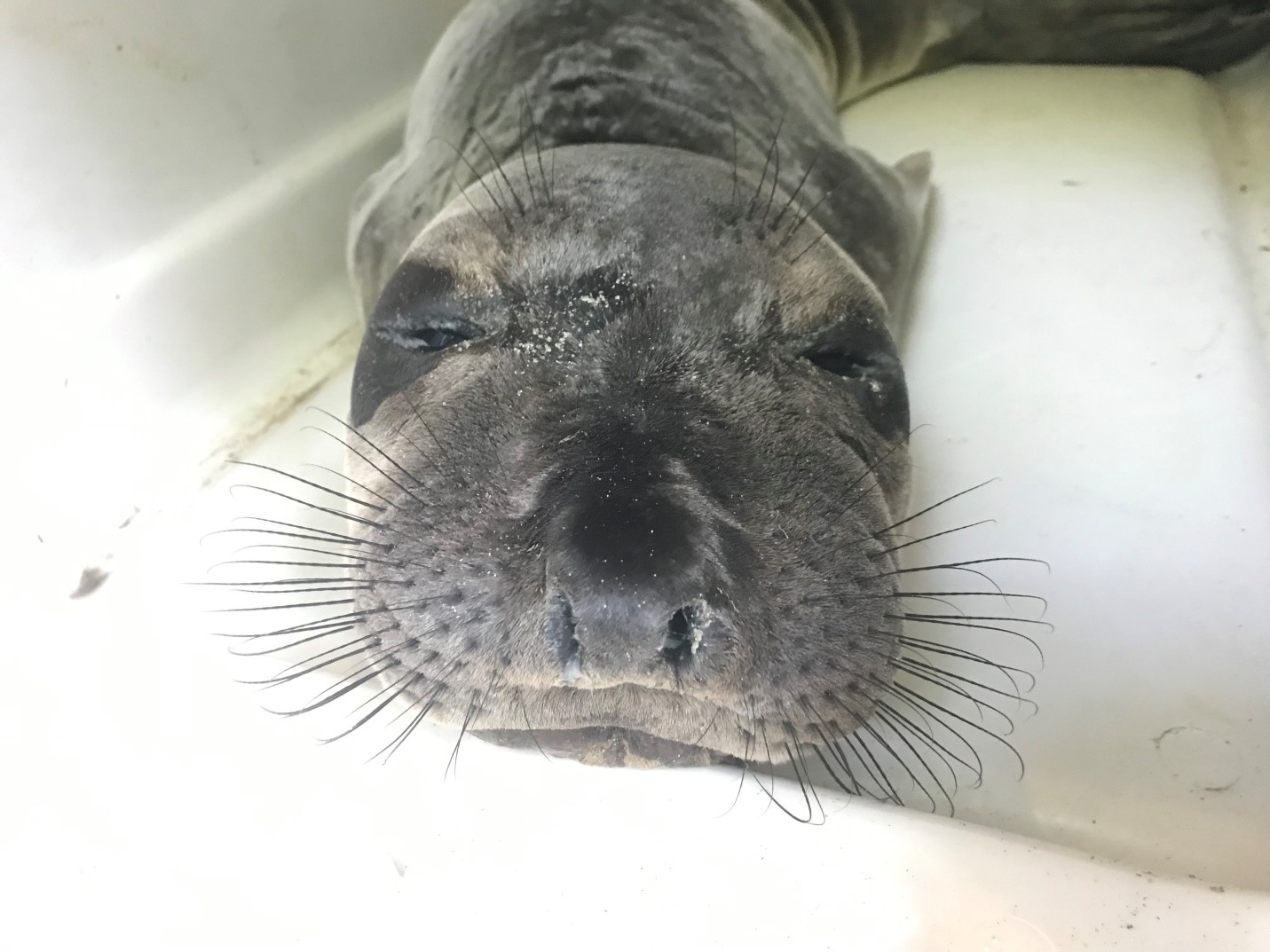A Crabby Seal
By Heather Henderson, Stranding Coordinator

Elephant Seal 97 Before Treatment
Photo by Dr. Stephany Lewis
On April 24th we received a report of an Elephant Seal pup (patient #19-097) under a house on Carbon Beach. When the rescue team arrived, it was determined that she needed to come in for care because her face, particularly the nose and mouth, was severely swollen. No obvious signs of injuries or trauma were found during the intake examination. We suspected an allergic reaction to eating toxic red crab.
Our suspicion was confirmed when we flushed her stomach with water and crab parts came back up the feed tube. As a result of communication and shared information throughout the West Coast Marine Mammal Stranding Network, we knew that large quantities of these crab parts lodged in the stomach could continue to cause trouble for the Elephant Seal – even result in death. This season, most of the Elephant Seals arriving at CWC have had a small quantity of crab parts in their stomach. However, #19-097 presented with an extremely large quantity.

Elephant Seal 97 After Treatment Photo by Heather Henderson
During the first two weeks in care, her stomach was flushed prior to each tube feed, in order to remove the crab parts, and medication was prescribed to address the reaction. We also delayed introducing whole food, in order to prevent overfilling or distending the stomach. In addition to any reaction that a patient may experience, the crab parts do not pass through the GI tract quickly and may cause overfilling of the stomach, partially blocking digestion. In extreme cases, the sharp parts can even tear the lining when able to pass.
Was our approach successful? YES! Currently, she weighs 60 kg and her attitude is bright. Now able to swim down and “catch” fish competitively in the rehab pool, #97’s road to recovery is progressing well. This Elephant Seal pup patient should find herself back in the ocean by the summer solstice.
